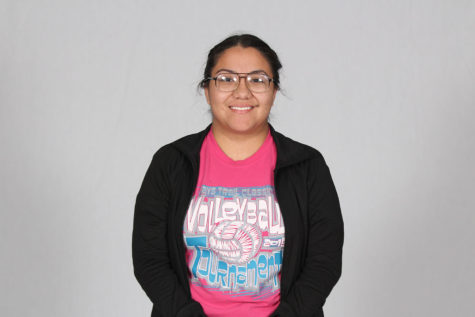New TVs provide new presentation methods to classrooms
Students watch as a physics teacher uses his EduDisplay to guide students through a daily assignment. The TVs arrived in classrooms in January.
February 22, 2019
In mid-January, students couldn’t avoid noticing the latest addition to their classrooms – a 70-inch LCD TV screen mounted on a large rolling stand.
Seemingly overnight, these TV screens, which are known as EduDisplay Systems, became the device of choice for teachers to project presentations and demonstrations. The EduDisplay allows teachers to project wirelessly from their laptops. The screens can be positioned anywhere in a classroom, providing teachers more flexibility than the projectors teachers have used for years at Akins.
Akins teachers received their EduDisplay Systems a couple weeks after students came back from winter break. Many doubts grew in students regarding where the funding came from for these EduDisplays.
“I was wondering how (we) got the funding for these,” said junior Elena Salinas, “(I was) considering our Robin Hood crisis that we’re going through right now.”
AISD Technology Project Manager, Edward Hill, assured the funding for these TV screens came from bond funds that were voted on by Austin residents. This means that the bond money is specifically for renewing technology in AISD classrooms. In that case, the bond money could only be used for new technology and not for general campus repairs.
`
“The one thing that really surprised me is that students walked in and they talked trash about it,” said Spanish teacher Brooke Maudlin. “‘What! The school can afford this, but can’t afford that,’ the students were very cynical about the whole thing.”
Some teachers struggled to incorporate their new technology into their classrooms for many different circumstances. Teachers were not given a how-to guide that in some way could help them in accessing the TV’s functions.
“Whenever I asked other people for help they were basically asking too and we would just basically throw tips out to each other,” science teacher Enrique Reyes said.
Apart from struggling to function, students and teachers worried about the size in already overcrowded classrooms. The TVs are bulky and in some cases, the height of the screen is limiting a student’s vision at the back of the room.
“I had to rearrange the desks a little bit so that students could see,” Maudlin said.
Math teacher Daniel Arroyo and many other teachers concern is finding the space to fit the TV, and all of their 40 desks and chairs.
Vendors were asked to provide AISD with audio/video solutions for classrooms. The district then had the vendor demonstrate them to schools for feedback. The district put together scoring for the systems and that info was used to decide what system it would provide to the schools.
“They did a video survey across all classrooms to see whether your innovation station was working or not. So it was a very targeted rollout,” Reyes said.
Some of the advantages of the EduDisplays include ease of installation, maneuverability, brighter and clearer image compared to projectors, and wireless capability. Arroyo said he has been able to use a digital app that he calls his classroom buddy (calculator dude) which he uses to draw notes, worksheets, quizzes, and tests.
“My main focus is having the ability to use my stylus, and I am still continuing my search for more,” Arroyo said.
There have been diverse viewpoints based on the quality of the TVs, and its usefulness between students and teachers.
“I think they are better than the projectors because they have better quality, and you are able to actually see better,” junior Sandra Godinez said.
In contrast, some students have not had the ability to interact with the TVs so they do not find these TV’s useful, or better and a waste of money. Because the rollout of the TVs was not universal, it felt to some students as if they were not useful to them or an unnecessary expense
“I don’t really see how much more useful they are than the projectors were,” Brian Sawyer said. “I’ve only actually seen it used in one other classroom as a teaching tool. So it doesn’t seem any different than a projector and in some cases, it can be a smaller screen than a projector, too. So it does seem kind of like a waste of money.”
The TV screens are part of a multi-year project that will be done in phases ensuring that all schools get some devices in the first phase. After that, all schools will be revisited to complete the project Hill said.
Other students and teachers said they are excited to discover new opportunities on how they can use the new TVs in the rooms.
“Overall I’m very grateful. It’s a positive thing. It’s a great improvement,” Maudlin said. “It helps make things more equitable from classroom to classroom.”








